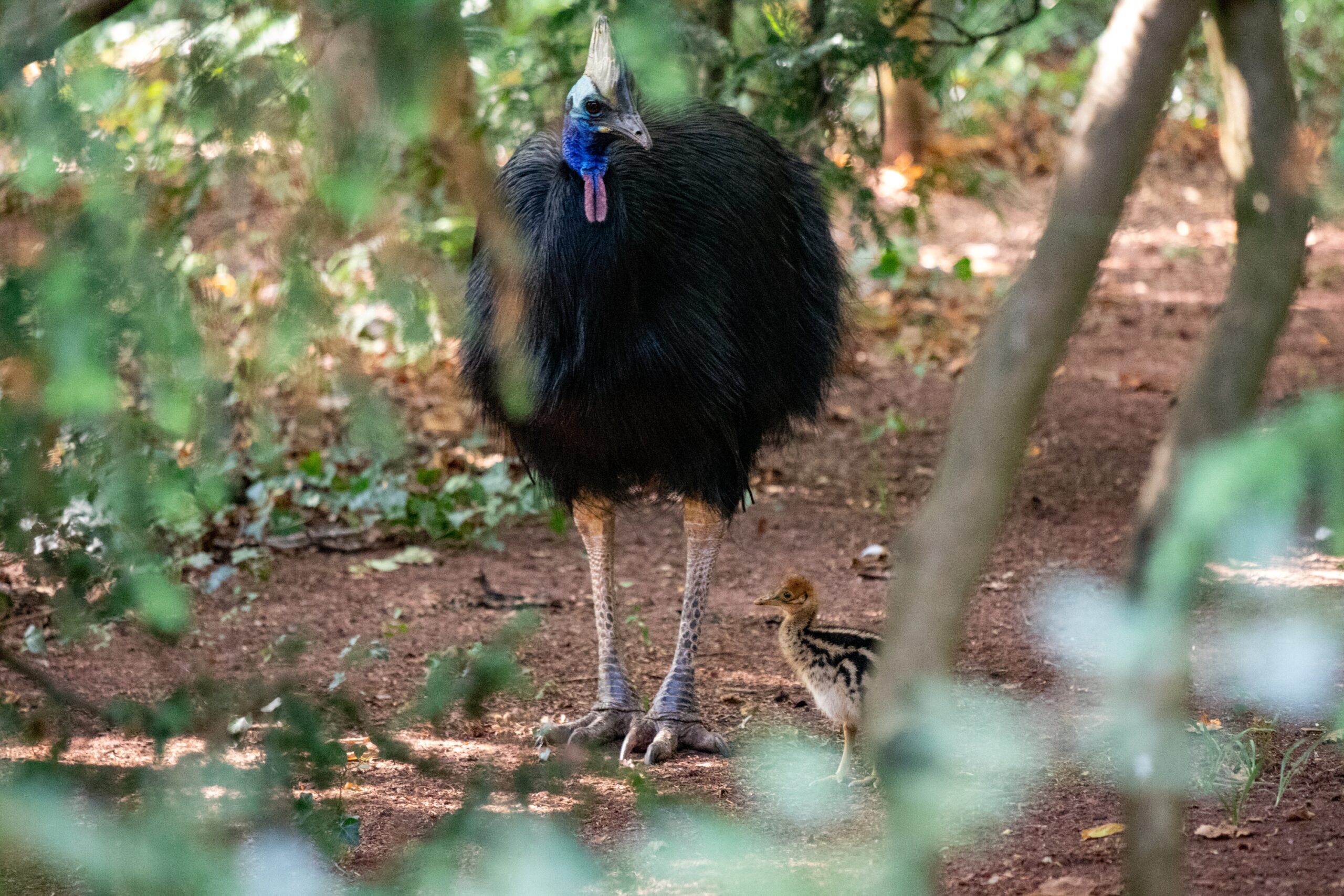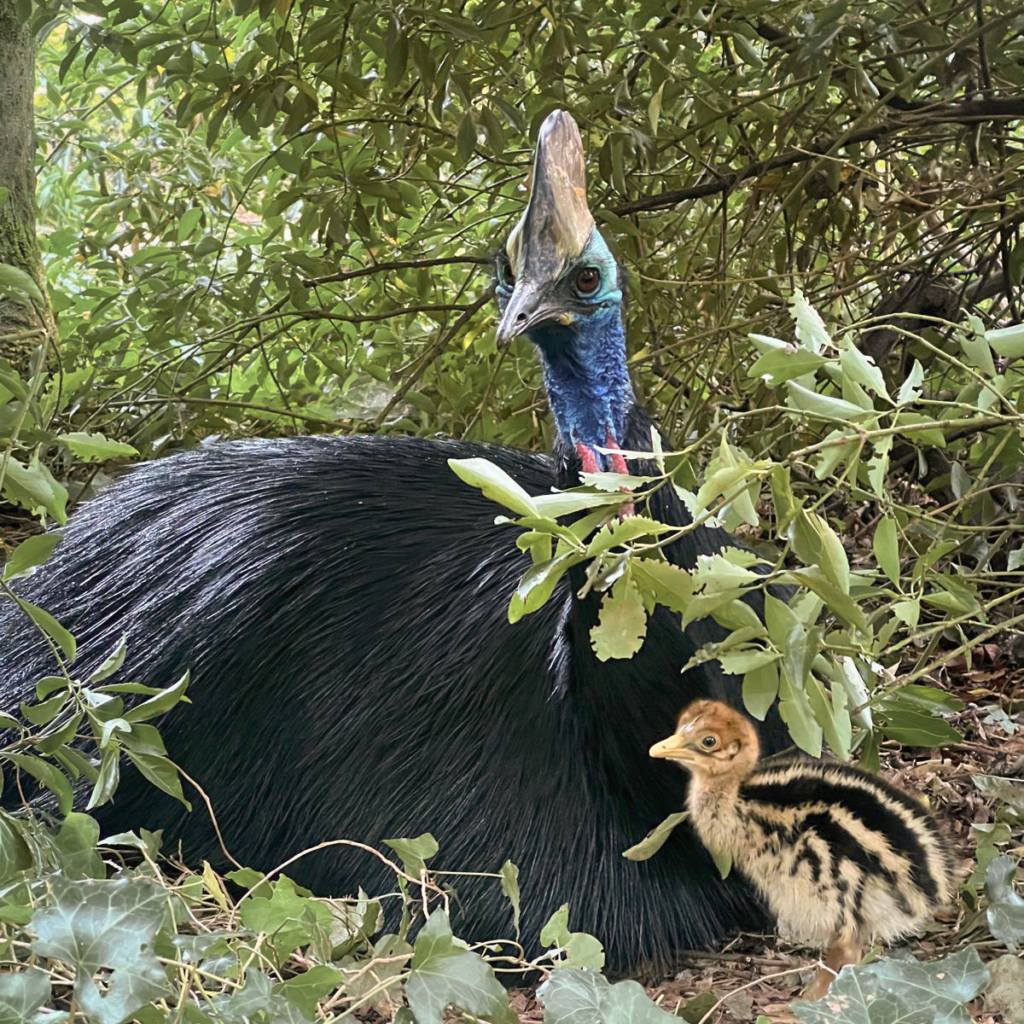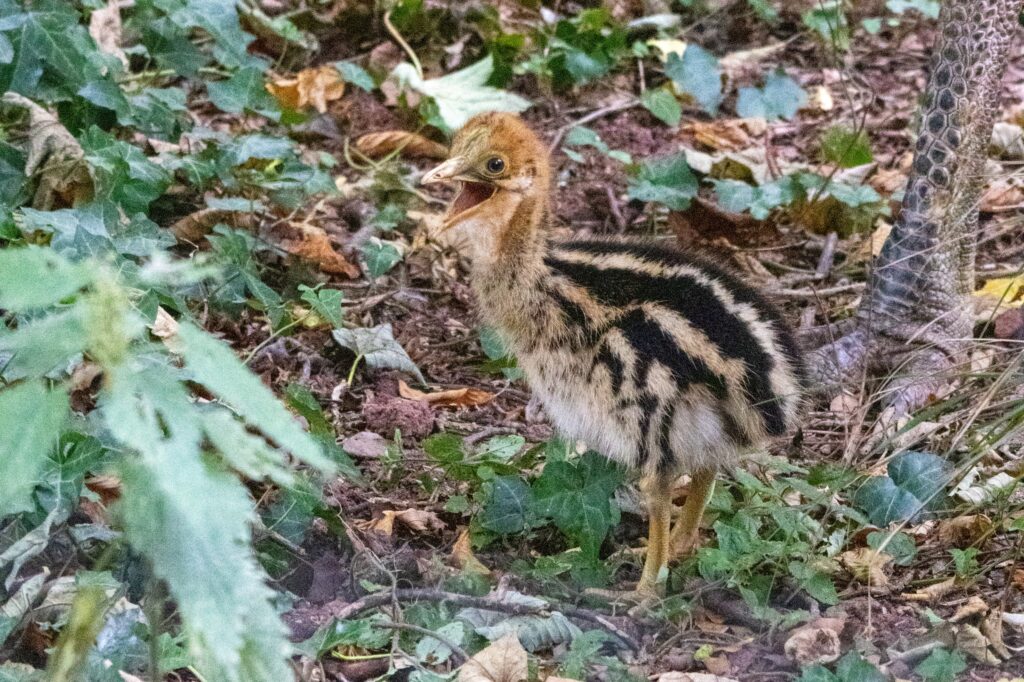
PAIGNTON ZOO CELEBRATES FIRST CASSOWARY CHICK IN 21 YEARS
A cassowary chick has hatched at Paignton Zoo in Devon, marking the first breeding of the notoriously difficult species at the facility since 2004 and the only such birth in Europe this year.
The chick is being raised by its father Madrid, following the species’ natural behaviour where males assume all parenting duties.
Lisa Ward, Birds Team Leader, commented:
“Madrid is doing everything right – he keeps the little one close, shows him where the best food is, and won’t let anyone come near his baby.”
Cassowaries, large flightless birds native to Australia and New Guinea, can reach around 1.5 metres in height (with females growing closer to 2 metres) and possess sharp claws capable of inflicting serious injuries. Despite their dangerous reputation, the species demonstrates notable parenting behaviour, with fathers incubating eggs for approximately 50 days and raising offspring for up to 18 months.

Pete Smallbones, Curator of Birds at Paignton Zoo, commented:
“Cassowaries can be quite challenging to work with, and successful breeding requires careful management and understanding of their behaviour. This breeding success is a real boost to the European zoo population.”
The achievement highlights the expertise of Paignton Zoo’s bird keeping team, as they are the only institution in the European breeding programme to successfully hatch a cassowary this year. The team’s other breeding accomplishments this year also include the pink pigeon, once reduced to just nine individuals worldwide, as well as hamerkop, scarlet ibis, crowned cranes, and several species of thrush.

The chick, described by visitors as resembling a “baby dinosaur” due to its prehistoric appearance, follows his father closely during daily activities. Feeding times offer particularly compelling viewing opportunities, with Madrid carefully guiding the young chick while it learns natural foraging behaviours.
Given increased interest in viewing what may be a once-in-a-generation wildlife spectacle, visitors wishing to see the rare chick are advised to book tickets online in advance: visit paigntonzoo.org.uk
About zoo-based breeding programmes
Southern cassowaries (Casuarius casuarius) are listed as Least Concern on the IUCN Red List, but are notoriously difficult to breed successfully in captivity, making successful breeding programmes valuable for maintaining healthy captive populations.
Paignton Zoo’s bird keepers manage the studbook for the cassowary EEP (European Breeding Programme), demonstrating their recognised expertise with this challenging species.
Additionally, the zoo participates in breeding programmes for multiple endangered bird species through EAZA partnerships. The team’s recent breeding successes include:
- Socorro dove (extinct in wild since 1972)
- Multiple pink pigeon (species down to 9 individuals in 1990s)
- Chilean flamingo
- Hamerkop
- Southern screamer
- Scarlet ibis
- Multiple species of thrush

